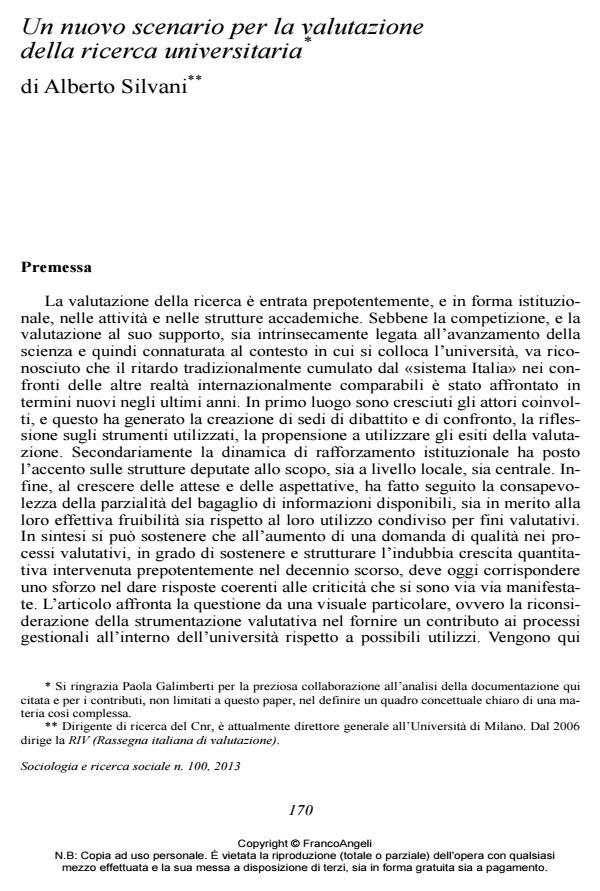A New Scenario for the Evaluation of University Research
Journal title SOCIOLOGIA E RICERCA SOCIALE
Author/s Alberto Silvani
Publishing Year 2013 Issue 2013/100
Language Italian Pages 9 P. 170-178 File size 595 KB
DOI 10.3280/SR2013-100016
DOI is like a bar code for intellectual property: to have more infomation
click here
Below, you can see the article first page
If you want to buy this article in PDF format, you can do it, following the instructions to buy download credits

FrancoAngeli is member of Publishers International Linking Association, Inc (PILA), a not-for-profit association which run the CrossRef service enabling links to and from online scholarly content.
The growing attention on research evaluation in universities has underlined the importance of having a data system of information able to both sustain the decision-making process, and allow its use for different and not always converging purposes. Promoting excellence does not always coincide with the need to guarantee high quality and availability in an increasingly competitive environment. The «system dimension» is not considered for what it actually signifies, both at an internal and external level of the university. The article underlines the «internal evaluation», the procedures and choices that are maturing in the Italian context, starting with the recognition of the phenomenon promoted by Crui, and taking into consideration three very different examples. These examples differ in organizational aspects, and are considered based on their development and their motivational drive. The conclusions underline how the scenario is constantly evolving and needs to take note of the changing forms and ways of communication. This includes a process that leads to the realization of the scientific results to disseminate. The hope is to avoid the risk of confining evaluation activity in a contradictory and partial environment, and open it to the progression of knowledge.
Alberto Silvani, Un nuovo scenario per la valutazione della ricerca universitaria in "SOCIOLOGIA E RICERCA SOCIALE " 100/2013, pp 170-178, DOI: 10.3280/SR2013-100016